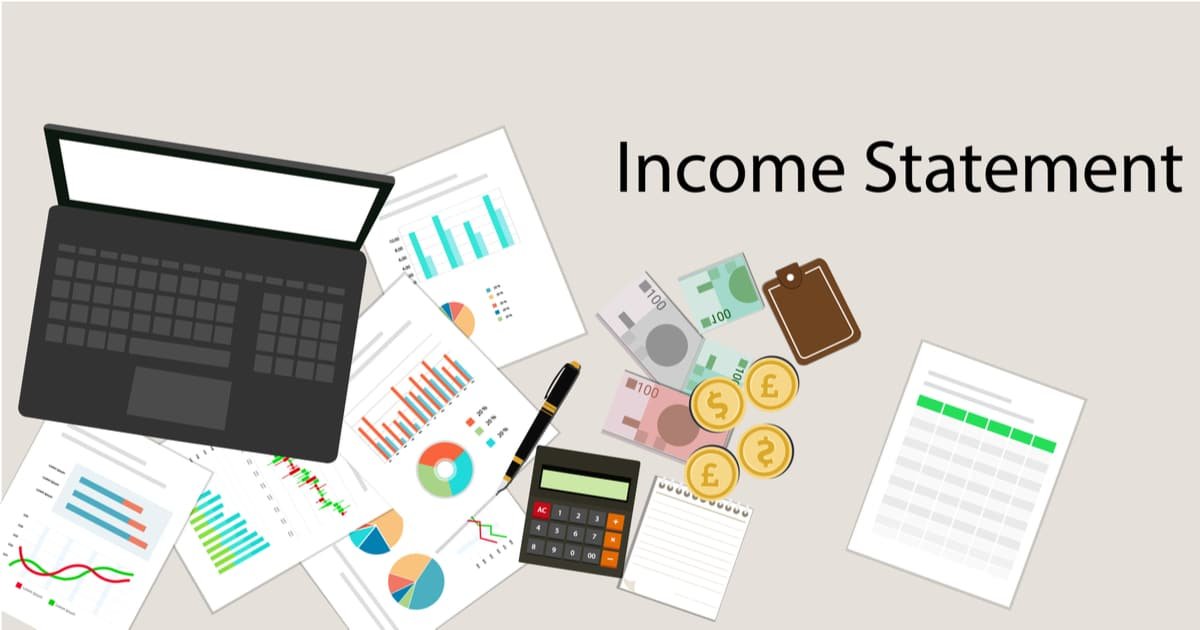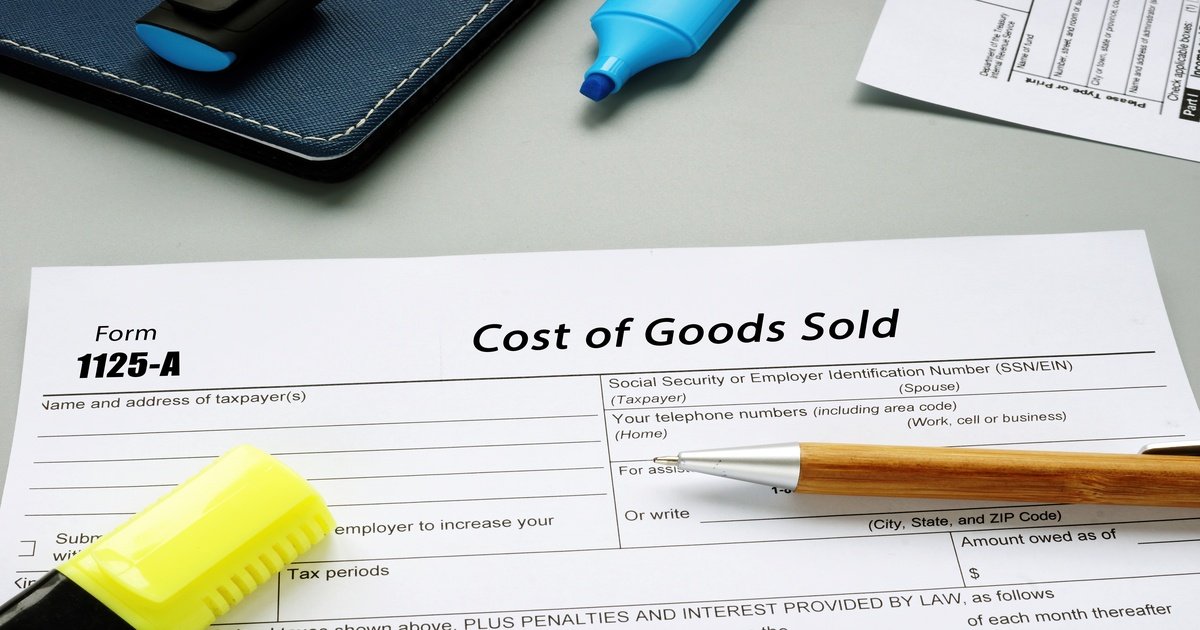Types of Costs in Accounting
A cost is any resource spent to achieve a particular objective.
In accounting, costs are categorized in order to help analyze how well a business is generating profits from revenue — that is, what's left once the costs have been deducted.
Costs can be classified in a number of ways, with many having several labels. This is because costs can be sliced and diced in different ways to analyze different aspects of a business.
For investors, costs are often used in financial ratios to help determine the efficiency or profitability of a business.
This article breaks down the main types of costs and how they're used in accounting.
What is a cost?

A cost is any resource sacrificed or foregone in order to achieve a particular objective. In simple terms, it's giving up one thing in exchange for another.
A cost might be spent to produce a car, to rent the factory where the car production takes place, or to pay the managers' salaries.
Using accounting principles, companies can analyze how efficiently they are generating a profit from the revenue they create, as profit is what's left of revenue once all the appropriate costs have been deducted.
This helps the management understand the expenses of the business, placing them in a better position to make important decisions about how to improve performance.
Costs can be direct or indirect, fixed or variable, operating, opportunity or sunk, tangible or intangible.
Additionally, a cost can have more than one label — for example, it can be both direct and variable — depending on what is being assessed. This means costs can be looked at in more than one way to help understand how a business is doing.
Costs are a critical part of many financial metrics and formulas, so understanding how they are classified and accounted for is useful for investors and finance professionals alike.
There are many different cost classifications in accounting, but the main categories are listed below.
SummaryA cost represents a resource given in exchange for something. Accounting for costs can be complex, but understanding how they work provides useful insights into different aspects of a business. Costs are also used in several key metrics.
Direct vs indirect costs
In accounting terms, a cost object is anything to which you can assign a cost.
To determine whether a cost is direct or indirect, you simply need to determine whether it's associated with a specific cost object. If so, then it's a direct cost.
Simply put, direct costs are tied to production, while indirect costs account for other activities that support production. Below are overviews of both.
Direct costs
Direct costs can be tied to the production of a good or service. They include raw materials, labor, and any other costs associated specifically with producing a product.
As an example, for a bakery, the cost of the ingredients and the baker's wages would be included among the direct costs of producing the baked goods.
Direct costs are used to make important decisions about how to price products.
For example, you can use direct costs to determine the minimum amount you can afford to sell a product for.
However, indirect costs should also be considered when setting the final price.
Indirect costs
Indirect costs go hand in hand with direct costs, though they are not as clearly related or linked to the production of a good or service.
Instead, indirect costs account for other activities surrounding the production of goods, such as security and salaries.
For example, in the bakery, the cost of electricity would be considered an indirect cost. This is because it can't be tied to a specific produced good and is instead used for a wide variety of purposes such as lighting, powering equipment, charging computers, etc.
It's critical for a business to be able to quantify its indirect costs since these also need to be covered in order to make a profit.
Importantly, both direct and indirect costs can be either fixed or variable.
SummaryDirect costs can be tied to the production of a good or service, while indirect costs are those surrounding production but not tied to specific products. Both can be either fixed or variable.
Fixed vs variable costs
Fixed and variable costs go hand in hand, with one accounting for costs not associated with output and one being directly tied to output.
Fixed costs
Fixed costs are those that do not change with output — they are the same regardless of how many goods or services a company produces.
Fixed costs are important for a business to know because they are present and remain the same irrespective of revenue. They're a critical component when determining current and future financial needs.
In the bakery example, the cost of rent and the salaries of management would be considered fixed costs. This is because these costs remain the same regardless of how many baked goods are produced.
Variable costs
Unlike fixed costs, variable costs change alongside output.
If a company is producing more or fewer goods or services, the variable costs will change in proportion to this increase or decrease in production.
Variable costs are important because they are so closely tied to output, which, for some businesses, may be in constant flux. Therefore, they need to be well managed.
These costs can have a big impact on a company's finances because the revenue generated from these costs may not be paid back right away.
An example for the bakery would be a seasonal increase in production for a holiday.
The baked goods would need to be made in the weeks leading up to the holiday, incurring extra variable costs during this time, such as ingredients and packaging costs.
However, the goods may not be sold until closer to the holiday, resulting in a gap between when the costs were incurred versus when the resulting revenue was made.
Additionally, variable costs fluctuate alongside demand. For example, with goods made to order from online sales, the more goods sold the greater the cost of packaging would be.
The same is true if demand drops. In that case, less packaging would be needed and this variable cost would decrease.
SummaryFixed costs do not change with output and are the same regardless of how many products are produced. Variable costs, on the other hand, fluctuate alongside output.
Operating costs
Operating costs result from the core operations of the business.
They are a broader category of costs accounting for the cost of goods sold (COGS) and operating expenses (OpEx). These costs can be either fixed or variable.
These are all the costs associated with producing the good or service, including worker's wages, rent, utilities, and sales and distribution costs.
Operating costs are calculated with this formula:
Operating costs = cost of goods sold + operating expenses
The idea behind classifying costs as operational is that the company can then better understand how efficiently it's generating revenue from the costs it's incurring.
For the bakery, the facilities or factory rental would be an operational cost, as well as a fixed cost. Another operational cost would be the utility bills, which are also an indirect cost.
SummaryOperating costs are those associated with the core operations of the business, including COGS and OpEx. These costs can be either fixed or variable.
Opportunity and sunk costs
These costs cover hypothetical scenarios and inevitable costs. They can be used to help shape future spending.
Opportunity costs
Opportunity costs are what it costs to not get the benefits of something.
Simply put, this is what you would have gained if you'd made a different choice. This is most important when the choice is between two mutually exclusive scenarios.
For companies, this accounting gives feedback on the choices made. It's useful to work through both the chosen and unchosen scenario to see what could be done better next time.
In the bakery example, a company might be faced with a choice between buying or leasing a new dough mixer.
If they decide on the purchase, they could then consider how the expense of the new machine, along with the benefits, compares to if they'd chosen to use what was spent on the new mixer in a different way, such as to pay down debt.
Ultimately, this can then be used to assess where the money has the most impact, which can be used to shape future business decisions.
Sunk costs
Sunk costs are those that have already occurred and can't be recovered, but are not of use in improving the business as it is now.
These costs are unrecoverable, despite not adding value in any way.
An example would be if the bakery business paid a marketing company to rebrand the business but then decided to stick with its current branding.
Other examples of sunk costs include insurance, rent, and nonrefundable deposits.
Sunk costs are removed from any future analysis since they are irrelevant to the decision-making process. When assessing spending, a business should only consider relevant costs, which are future costs that need to be incurred.
Every business has sunk costs and they are a natural part of finance.
SummaryOpportunity costs are those not chosen when a business is faced with two different choices. These can be analyzed to inform future spending decisions. Sunk costs, on the other hand, are those that can't be recovered. They are a natural part of finance.
Tangible vs intangible costs
Tangible and intangible costs account for what can and can't be quantified. Here are overviews of both.
Tangible costs
Tangible costs are associated with specific assets or sources. They are quantifiable.
Understanding tangible costs has clear benefits for running a profitable business, as these are the assets involved in producing the goods or services the company sells.
Examples of tangible costs include machinery, salaries, inventory, and equipment.
Intangible costs
Intangible costs are harder to define. They are not attached to specific items but are more structural or behavioral. They can't be easily estimated or quantified.
An example would be employee morale, which may drop if, perhaps, the tangible cost of wages were not increased proportionately to inflation.
Although hard to quantify, it's very important for a company to consider the full context of costs and not just focus on tangible costs.
Another consideration in this example would be the relationship between worker morale and customer loyalty, as there may be impacts to sales as well if employees are unhappy.
SummaryTangible costs are quantifiable costs associated with specific assets or sources. Intangible costs are non-quantifiable costs not tied to specific items. Both are important for a company to consider when analyzing costs.
How costs are used in accounting
Costs are used to analyze profitability — that is, how well a company is generating profit from the revenue it makes once all costs have been deducted.
This is done by comparing different classifications of costs to other reported numbers via financial ratios. Costs are used in a number of ratios, including the variable cost ratio, the cost-benefit analysis, and the contribution margin.
Additionally, costs are part of many other metrics and their associated formulas.
Variable cost ratio
The variable cost ratio is used to find the optimal balance between revenue and the cost of production.
To do this, the ratio looks at the level of production that will most efficiently generate revenue by analyzing the variable costs of production.
It is calculated using the following equation:
Variable cost ratio = variable costs / net sales
The cost of producing goods includes both fixed and variable costs.
Generally, increasing production uses the same fixed costs to produce more goods, so the cost per unit coming from fixed costs is reduced.
However, variable costs will increase alongside an increase in production. This ratio looks at which point the variable costs of production outweigh the benefits.
Cost-benefit analysis
The cost-benefit analysis, or CBA, estimates the costs of different decision alternatives and then estimates the likely benefits of the options.
CBA can include tangible and intangible costs.
So, for example, it might consider the cost of building a new plant and the increase in revenue that would result from the higher volume of products produced — a tangible cost — as well as the effect of a brighter, more modern workplace on morale — an intangible cost.
This analysis might also then compare the opportunity costs of the option not chosen — for example, if the company chooses not to build a new plant and pays down debt instead.
Contribution margin
The contribution margin is the sales revenue minus variable costs. It can be calculated as a total, called gross, or on an individual product basis.
The contribution margin indicates how much of a company's overall profit is contributed by a particular item, for example, one type of cookie versus another.
The company can then decide if it would be better off producing a larger proportion of the product that contributes more to profit.
Here is the formula:
Contribution margin = total revenue – variable costs
It can also be calculated as a fraction of total revenue:
Contribution ratio = (total revenue – variable costs) / total revenue
This ratio can also be used to find out when a product is selling at the break-even price.
It helps companies define the selling price range for a product and determine what profit a sales price will produce.
Note that this ratio only considers variable costs, unlike the gross profit margin, which takes into account all costs incurred to make the sale.
Costs can fall into multiple categories
Before wrapping up, it's worth discussing that costs can be categorized in multiple ways.
This can be confusing when analyzing an income statement, as components like OpEx or COGS will include different combinations of these classifications.
As an example, consider OpEx. These are the costs not directly tied to the production of goods and services, such as rent and electricity. These costs are therefore indirect costs, but the rent would also be a fixed cost and the electricity would also be a variable cost.
Compare this to COGS, which accounts for the actual costs of the goods manufactured and sold, such as materials and wages. These costs would then be direct and variable.
In short, these categories are used to analyze different aspects of spending, thus providing different but complementary insights.
SummaryCosts are used in accounting to analyze profitability. They're also part of metrics like the variable cost ratio, the cost-benefit analysis, and the contribution margin. It's important to note that costs can fall into several categories.
The takeaway
A business's objective is to maximize profits from revenue generated while incurring costs.
Costs are carefully defined for accounting purposes, to help illustrate how well the business is doing from different perspectives, and to inform future spending decisions.
Costs can have more than one label attached to them because they can be sliced and diced in different combinations to help companies see specific aspects of their operations.
To best understand what type of cost an expense is, consider how it can help in understanding how the business is doing.
From costs, companies use a number of different ratios to see how those costs are affecting performance. Different scenarios can also be tried out to make the best future plans.
Overall, analyzing costs is a critical part of operating a business and planning for the future.





